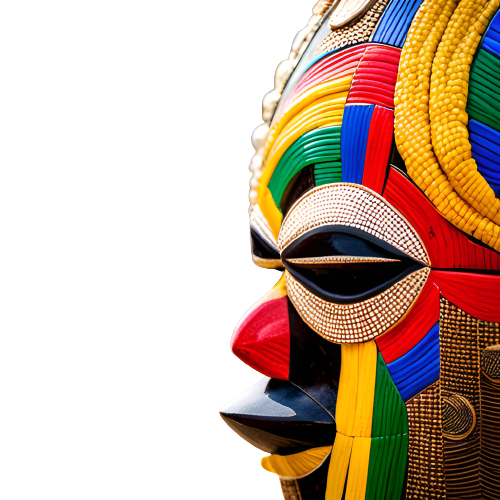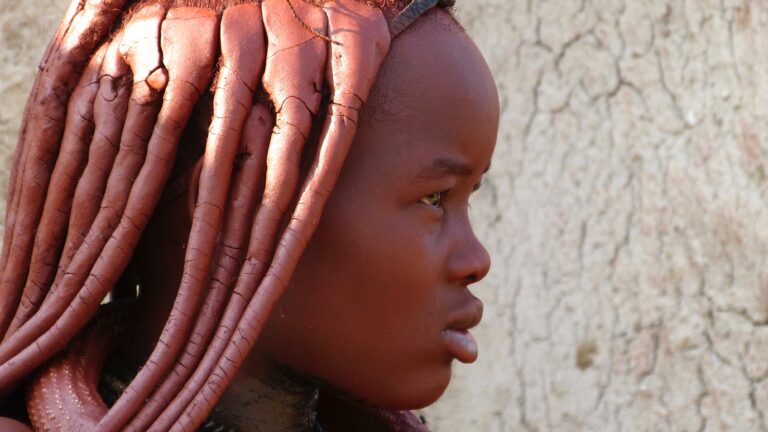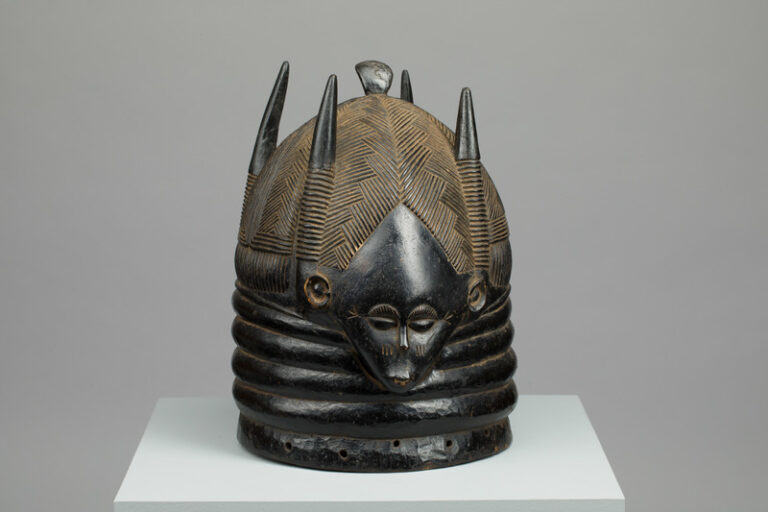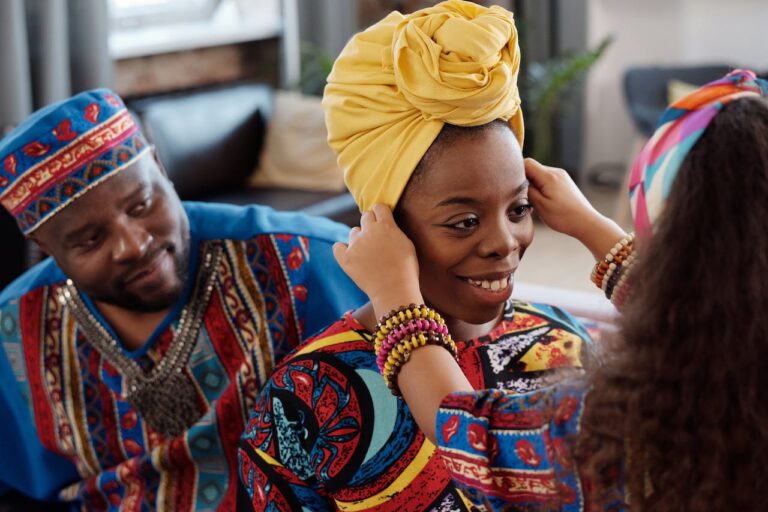The Lost TRUTH About African Masks
You can know what your mask is all about!
Let us help you channel the energies of your African Mask.
African masks hold a profound significance within the ancient tribal traditions of Africa and continue to be crafted and utilized to this day. These masks are revered for their ability to serve as a gateway to the spiritual world when worn during rituals and ceremonies, making them sacred symbols to the African tribes. Despite their presence in museums as prized works of art, it is crucial not to overlook the deep cultural importance they hold within the communities that create them. Let’s delve into some captivating facts about the symbolism and craftsmanship behind these remarkable African masks.
Origin of African Mask
Africa has a rich and ancient tradition of using masks. This simple fact is consistent in all of Africa. These Masks have rich cultural significance and date back long before the first century B.C. They served diverse purposes, including rituals related to myths, creation, hero worship, fertility, agricultural festivities, funerals, ancestor cults, initiations, and entertainment. This extensive use of masks has been prevalent across numerous African tribes for centuries.
There is evidence that African masks were depicted in cave paintings in places like Tassili, Algeria, Fezzan, Libya, South Africa’s Bushmen. Notably, Tassili’s images depicting dancers with masks have been known since the account of the Arab traveler, Ibn Batuta, in 1352, but they gained more attention with the expedition of the French explorer, Henri Lhote. These famous rock paintings indicate that masks in Africa have been utilized for at least 4,000 years. Some of the oldest known masks from Africa’s history include the Nok Terracotta from Nigeria, which have been dated to around 360 B.C. through carbon-14 testing. While nobody trully knows the reason the first masks were made, it is my belief that we may seek meaning in their usage and symbolism.
What do African Masks Mean to Africans
It is common to have African Masks hang in living rooms and other residential spaces in today’s world. Needless tosay that our African Ancestor would be utterly shock at what has become of things they held sacred. Let us quickly explore how the African viewed African Masks.
The Western perception of Africa has historically hindered a true understanding of the significance of masking in the region. From the era of slave traders in the 15th century to the colonial period, Africa endured severe exploitation at the hands of the West. Prejudiced attitudes towards African masks were firmly established by the late 19th century, leading to misunderstandings and negative reactions. Fortunately, some early ethnographers like Richard Andree began to appreciate the beauty and value of these masks, challenging biased perceptions.
In Europe, avant-garde painters such as Picasso and Modigliani discovered African masks in ethnographic museum collections and drew inspiration from them in their own artistic expressions. Nevertheless, many in the West continue to view African masks as curious art objects suitable for display, unaware of their deeper significance.
For Africans, masks hold a profound ritualistic purpose and are not regarded as mere art. In tribal cultures, masks are instruments of ritual, intrinsically connected to costumes, dancers, music, tribal gatherings, and sacred spaces. This interconnected worldview is reflective of the communal and well-ordered nature of African societies, contrasting with the individualistic cultures of the West. The African approach to art is integrated into everyday objects like pottery and clothes, rather than being confined to museums.
The African way of life is intertwined with spirituality, which plays a regular role in their existence through ritual enactments. This strong connection with nature, the group, and the soul shapes the African worldview. It is essential to recognize and appreciate the deep cultural and spiritual significance that African masks hold within the context of their communities.
A Contrast from Western Perspectives: Fused Oneness, Group Identity, and Concept of the Soul
Unlike the Western perspective, which seeks to control nature, Africans embrace a harmonious connection with it, seeing themselves as one with the natural world. Through active participation in rituals, myths, and masks, Africans engage with nature, while the Westerner often admires it as mere beauty.
A strong sense of group identity is central to African societies. Unlike the West’s emphasis on individuality and personal rights, Africans prioritize community rights and values. In some places, like Niger, religion is so ingrained in their lives that they don’t have a separate word for it – it seamlessly intertwines with their daily existence.
For Africans, everything in nature possesses a power within. From fertility to the wind, each concept holds an indwelling spirit. Embracing animism, African culture perceives inanimate objects as having a soul. Masks serve as more than symbols; they act as “spirit traps,” containing the soul for the benefit of the living. Even after death, the African believes that the ancestor’s soul remains part of the family’s life.
The practice of masking emerges from this harmonious interconnectedness between Africans, their communities, and their environment. It serves as a vital element of spiritual life, drawing these elements closer together. This profound outlook highlights a fundamental contrast between the African and Western worldviews.
African Masks and Rituals
African masks hold profound significance within the continent’s cultural fabric, extending far beyond mere facial coverings. These masks encompass entire costumes and adornments, symbolizing the essence of tradition and ensuring the continuity of African heritage. When tribal peoples encounter carved masks depicting ancestors and heroes, the impact is deep and spiritual.
Masks, through their representation of spirits, make the unseen spirit world visible, kindling strong beliefs in rituals and fostering unwavering religious devotion. For African communities, these rituals are not mere performances; they serve as essential threads weaving the fabric of social cohesion and order in their lives.
A compelling example of the power of masked rituals lies in the circumcision ceremony practiced among the Batchokwe of Zaire. In preparation for the main event, young boys undergo rigorous training and education, grappling with notions of impurity while maturing through taunting. Guided by a masked figure, they journey through the village to the “place of dying” for their rite of passage.
After the ceremony, the boys retreat to a secluded hut, where they take sacred vows and acquire further knowledge to become full participants in their society. The secrecy surrounding their initiation is so strict that even the news of a boy’s death is withheld from his mother until their return.
Emerging from confinement, the boys shed their ceremonial attire and purify themselves in the river before returning to the village. Led once more by the masked figure, they perform dances, proclaim their adult names, and are warmly embraced as valued members of the community.
This intricate and spiritually significant ceremony reflects the central role of African masks in shaping cultural identity and nurturing a sense of belonging within the communities they serve. Beyond superficial appearances, these masks represent the essence of African heritage and the profound connections between the living and their ancestors.
Making African Masks
African masks stand as remarkable creations in human history, reflecting a humanistic quest for the world of spirits while embracing distinctive qualities unique to each tribe. The majority of these masks are carved from wood, tied to areas where this resource is abundant. For the African, the tree itself possesses a living spirit, and the carving process involves purification ceremonies and sacrifices to transfer the tree’s spirit into the mask, enhancing its power. Carvers undergo preparations that include fasting, purification, and abstaining from sexual intercourse, further emphasizing the ritual significance.
Different cultures specialize in various materials for their masks, such as basketwork in the Congo, bronze masks among the Senufo, or metal surfacing with the Marka. Resourceful African carvers incorporate an array of materials, including sheet metal, fur, animal teeth, feathers, textile, glass, cowrie shells, and glass beads. In modern times, imported materials like acrylic paints and plastic necklaces have found their way into some African masks.
Masks in Africa are typically fastened to the face with bands, scarves, or raffia wigs, and costumes are crafted from palm leaves, local fabrics, or leather. African mask carvers hold esteemed positions within their communities, often having learned their craft through years of apprenticeship or belonging to a woodcarving family. The status and recognition of a carver vary across different cultures.
African masks encompass a diverse range of styles, from naturalistic with clear Negroid features to expressionistic idealizations or abstract representations of animals and human expressions. Most masks tend towards abstraction, reflecting their spiritual intensity and profound cultural significance.
Throughout history, the art of mask making was often a collective effort without individual attribution, but contemporary scholars have challenged this notion, acknowledging the creative skill and respect gained by mask makers within their communities.
In addition to face coverings, African masks include helmet masks and headdresses, displaying a breathtaking array of stylistic features. From naturalistic to abstract, these masks showcase the rich cultural heritage and spiritual connection of the African people.
Facts and Significance of African Masks
1. African Masks: Spiritual Connections and Ritual Performances
African masks hold profound spiritual significance within the communities that create them. While the Western world may view them as decorative art pieces, for Africans, masks serve a vital role in connecting with the spirit world during ritualized performances. Worn during weddings, funerals, and secret society initiations, masks help wearers enter a trance-like state to communicate with ancestors and control forces of good and evil.
2. A Living Tradition: Passing Down Skills Through Generations
The art of mask making in Africa is a living tradition that spans millennia. Passed down through generations, these skills are typically transmitted from master carvers to their apprentices or from fathers to sons. African tribal artists, predominantly men, hold esteemed positions within their societies as creators of these spiritually significant objects.
3. Carved in Wood: Rich Symbolism and Natural Materials
The majority of African masks are carved from wood, embodying a deeper symbolic meaning. Carvers believe that the tree’s soul infuses the mask, making it spiritually potent. Permission from the tree spirit is sometimes sought before cutting it down, and animal sacrifices may be offered as a mark of respect. Masks often feature intricate adornments using textiles, shells, feathers, fur, and paint. The tools used in carving also hold symbolic significance, carrying the skills of their previous owners.
4. Worn by the Honored Few: Reserved for Tribe Leaders
Masks are reserved for specific members of the African community, usually male tribe leaders, particularly elders who have earned wisdom and respect over time. When these leaders wear the mask, they are believed to embody the spirit they seek to invoke. Women play a significant role in decorating masks and accompanying costumes, and they may also participate in dances alongside the mask wearer.
5. Cultural Expression: Masks Reflect Tribe Values
Different African tribes have unique stylistic traditions for creating masks, each reflecting the cultural values and beliefs of the group. For example, Gabon tribes use masks with large mouths and long chins to symbolize authority and strength, while Ligbi masks blend animal and human features, celebrating a connection with nature.
6. Diverse Forms: From Face to Full-Head Coverage
African masks vary in form and function. Some cover only the face, tied with a band or strap, while others resemble helmets that envelop the entire head. Remarkably, some helmet-like masks are carved from whole tree trunks. Certain masks cover both the head and shoulders, featuring a heavy base resting on the wearer’s shoulders, exuding an air of commanding authority or even terror.
You can know what your mask is all about!
Let us help you channel the energies of your African Mask.







